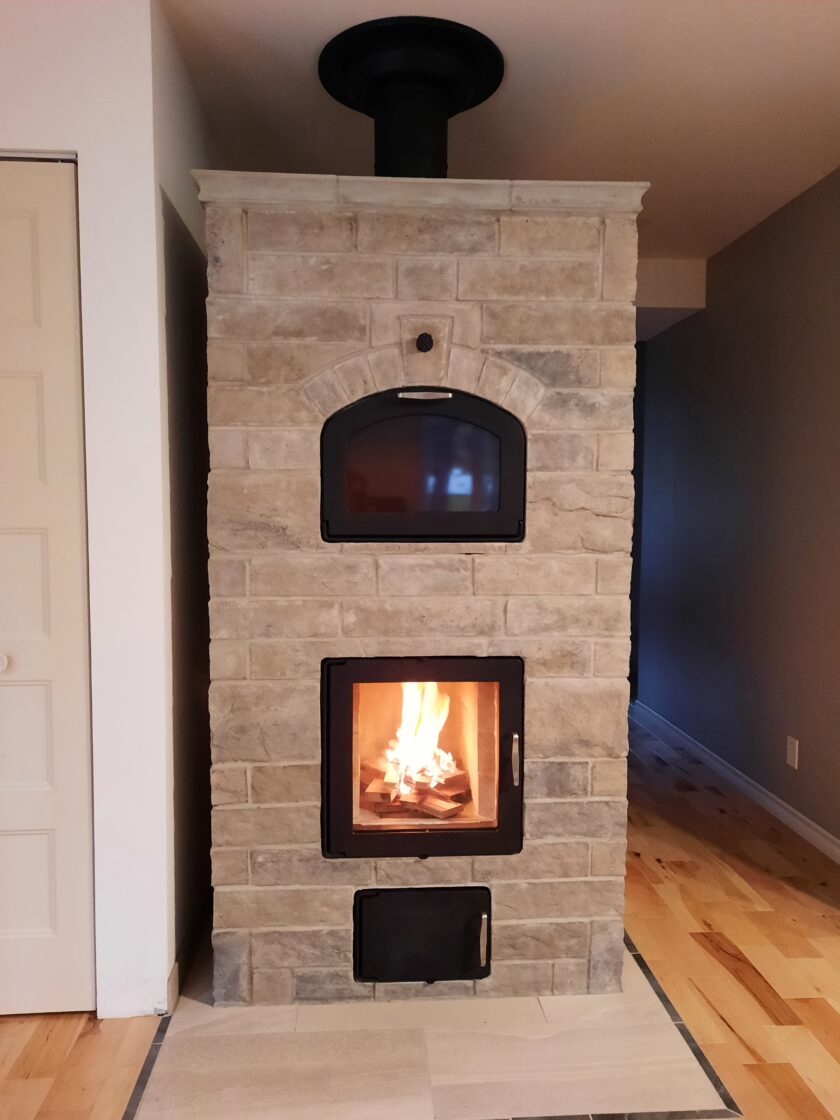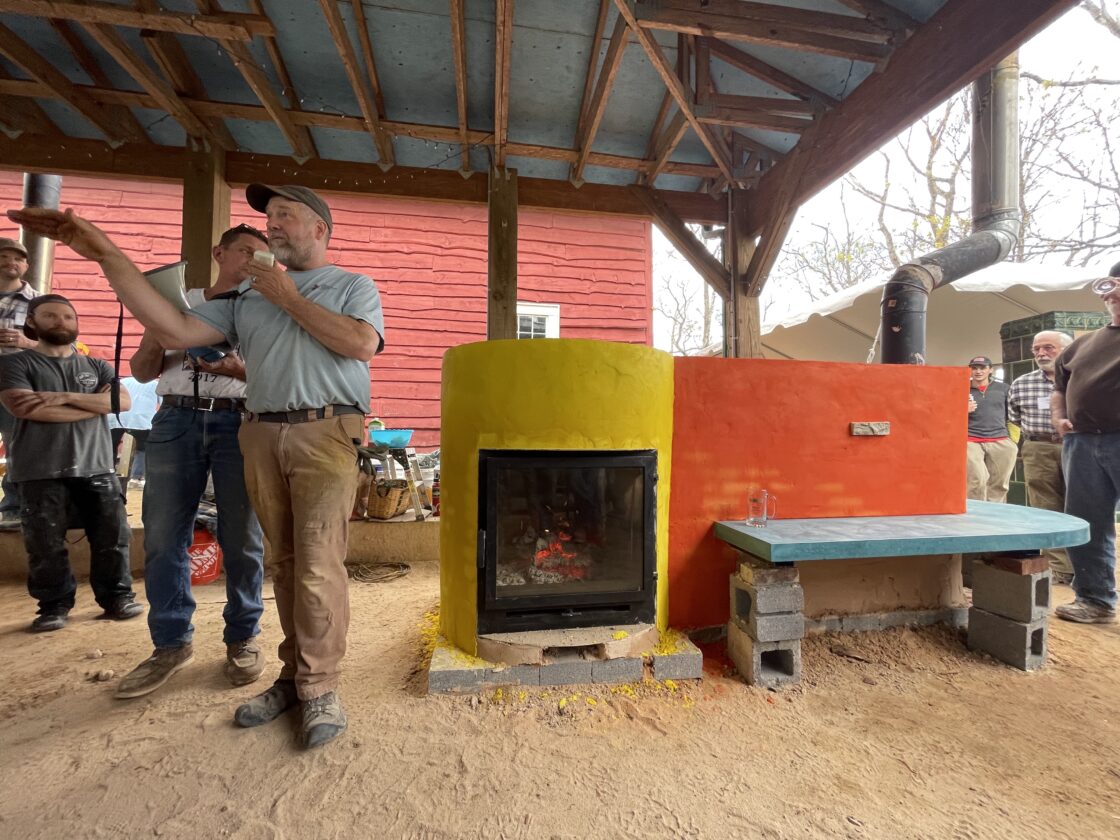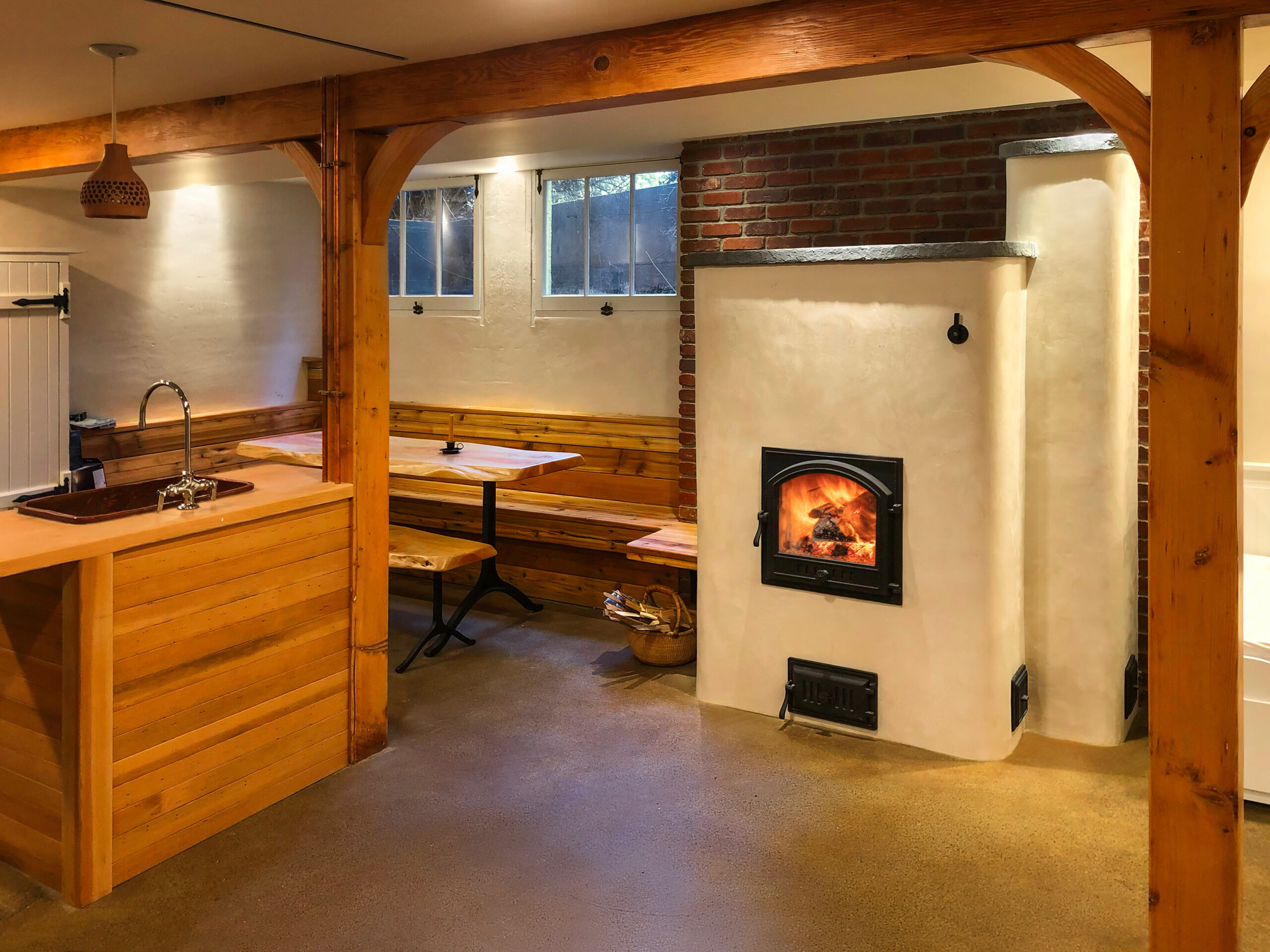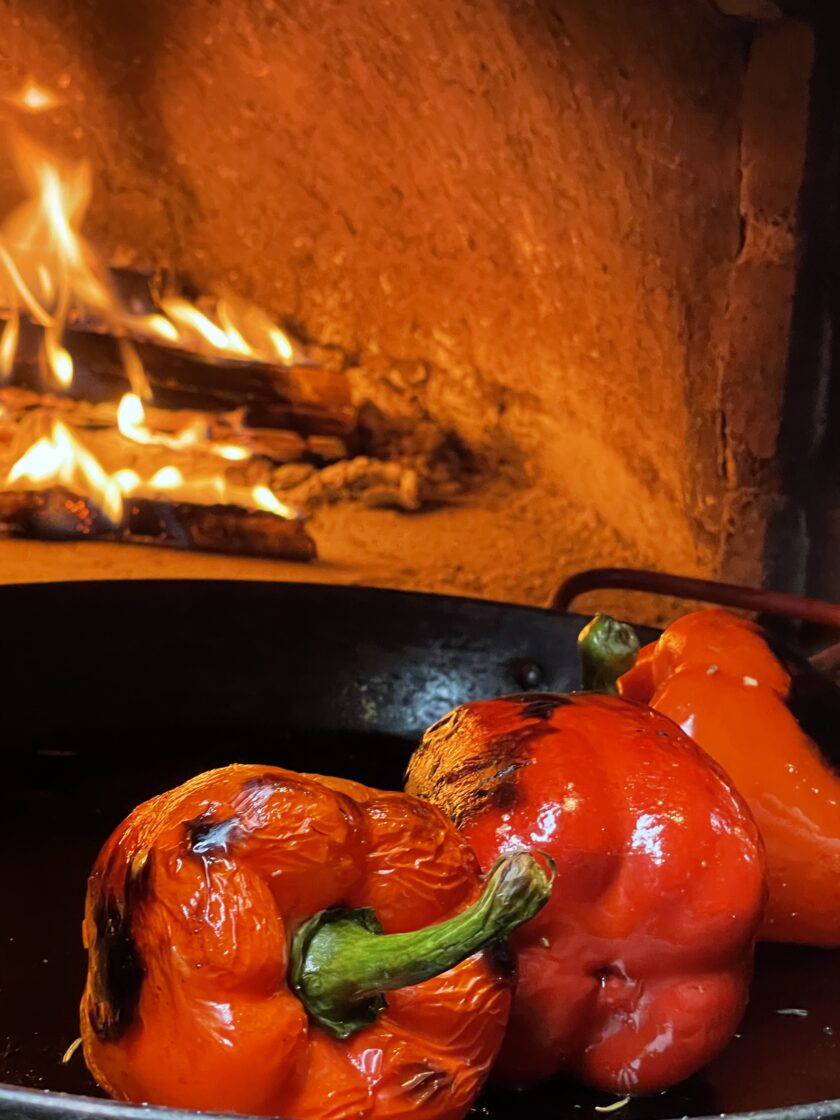
This illustration demonstrates the role of masonry heaters in providing heating and cooking capacity for homes in a long-term sustainable flow of energy and resources.
Masonry heaters are essentially a solar energy solution. Well-seasoned firewood acts as “batteries” for the solar energy captured by trees in forests through photosynthesis. When the wood is then burned cleanly and efficiently in a well-designed firebox, the energy stored in the bonds of complex organic molecules that make up wood are completely released as heat energy. Masonry heaters do a great job of capturing that heat inside their mass, rather than letting the majority escape up the chimney, and radiate it out over an extended period of time.
In ideal combustion, the only two byproducts leaving the chimney are carbon dioxide and water vapor because all of the energy tied up in more complex organic molecular bonds is released. When combustion is not complete, only partially volatilized and unburned organic compounds result which are commonly known as smoke, soot and creosote. Pollution resulting from incomplete combustion represents energy potential underutilized, either by poor stove design or most often by users burning wood that has not been completely seasoned.
Ash is the portion of the fuel which is unburnable, consisting of nutrients and micro-nutrients which can be returned to the soil. These nutrients include calcium, potassium, phosphorous and trace metals.
In order to properly consider wood as a sustainable fuel source for communities, it is important to use extremely efficient appliances such as masonry heaters to provide residential heat and to take seriously the concepts of sustainable forestry practices at a community scale.
Artwork by Jonathan Mears, a friend and collaborator of Firespeaking.




